Pros
Cons
Introduction
Front
{{section_header}}{{section.name}}{{/section_header}}
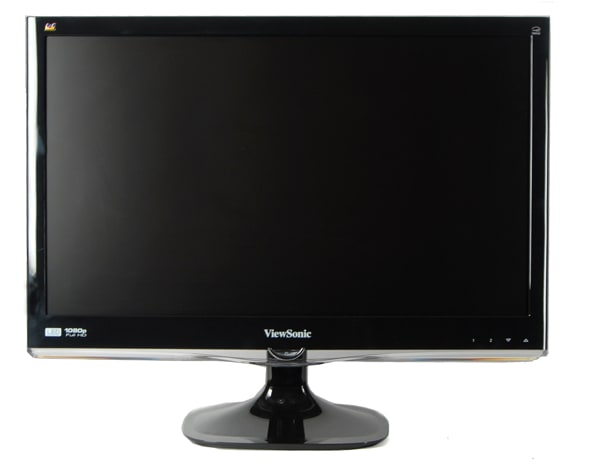
Back
{{section_header}}{{section.name}}{{/section_header}}

Sides
{{section_header}}{{section.name}}{{/section_header}}
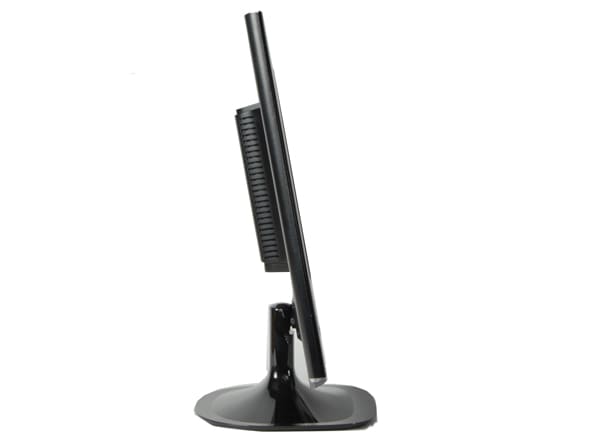
Size Comparisons
{{section_header}}{{section.name}}{{/section_header}}
In the Box
{{section_header}}{{section.name}}{{/section_header}}
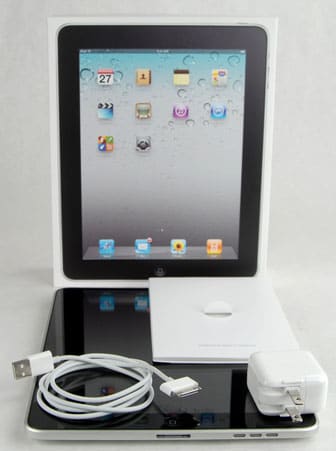
Packaged in the boring brown cardboard box the {{product.name}} comes in is a single, white USB cable, your eReader, and some documentation, that's it.
Handling
{{section_header}}{{section.name}}{{/section_header}}
Because the new {{product.model}} without a true keyboard is so tiny, it feels a bit more natural to grip it with one hand only, as a two-handed grip feels quite awkward.
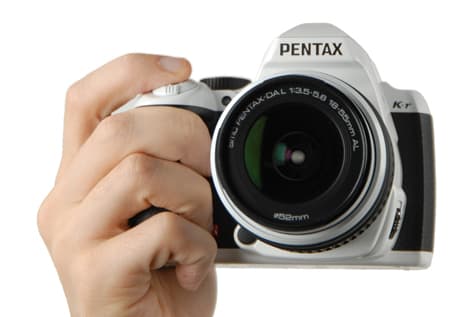
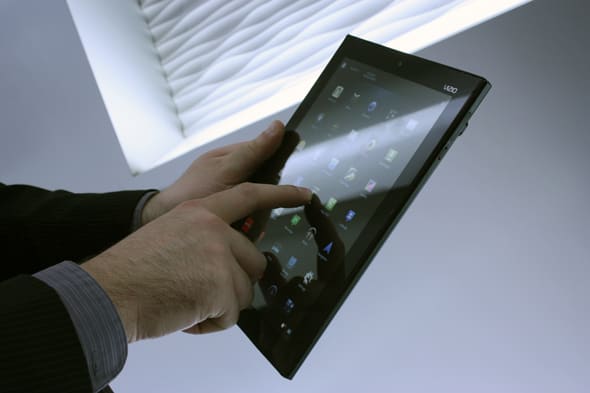
Screen
{{section_header}}{{section.name}}{{/section_header}}
The smallish screen of the {{product.name}} sports a resolution of 800 x 600, and a DPI of 175. What does this mean for you? Well, for starters, because of the type of screen used by the {{product.name}} is eInk, the picture that you see will look almost exactly like a printed page to the naked eye. It would take a microscope to see the individual dots, and even then they are small. This screen will eventually make you forget you're reading an eBook.

Indoor & Outdoor Use
{{section_header}}{{section.name}}{{/section_header}}
Because eInk screens use ambient light to make their picture visible, they are very easily readable in a huge range of light, from a moderately well-lit room to bright sunlight. Unlike eReaders and tablets with an LCD screen, this eReader can be taken to the beach and read easily.
Controls
{{section_header}}{{section.name}}{{/section_header}}
Many Kindle users may lament the loss of a keyboard, but the controls for the new {{product.name}} are greatly simplified. page turning keys are on each side of the unit itself, and the d-pad and navigation buttons are placed where you are unlikely to hit them accidentally in the middle of your latest novel.
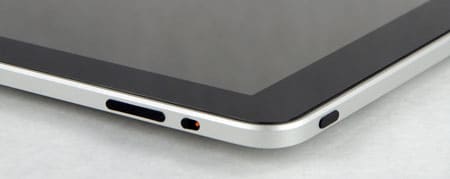
The controls on the top right side of the iPad body: volume, lock and power.
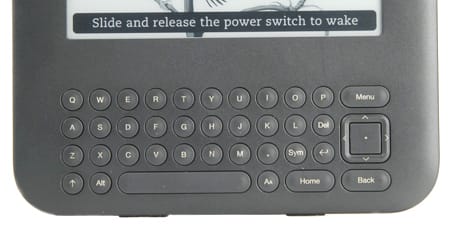
Oddly enough, the power button has been moved from the top of the unit, to right at the bottom next to the microUSB port. It's unclear why this is the case, but as it's out of the way, we have no complaints.
Connectivity
{{section_header}}{{section.name}}{{/section_header}}
The most affordable model of the new Kindle family is WiFi-only (802.11n), but what they do with that WiFi is actually quite cool. Whenever you establish a stable connection, you can use the Amazon cloud storage to access your personal library of books (should the 2GB on-board storage not be enough for you). You can also browse the web in an extremely limited fashion, "loan" your books to other {{product.name}} users on the same network, or share passages from your own eBooks via Facebook or Twitter.
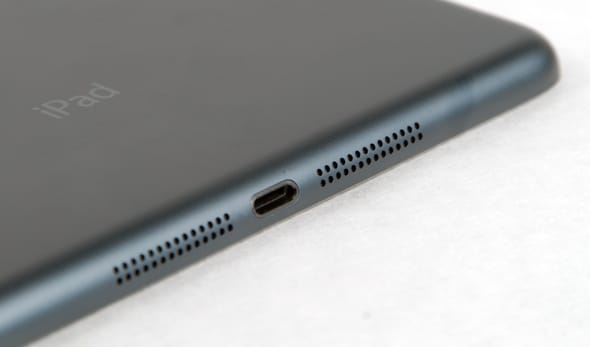
Here we see a Lightning dock in its natural habitat.
Battery Life
{{section_header}}{{section.name}}{{/section_header}}
After subjecting the new {{product.name}} to the existential horror of our disembodied finger machine poking at it for 24+ hours, we feel confident that you will be able to read eBooks for over 24 hours straight if you have WiFi turned off. As always, your mileage may vary depending upon whether or not you have WiFi enabled, and what other settings you have turned on like sharing.
Reading Books
{{section_header}}{{section.name}}{{/section_header}}
Users familiar with previous iterations of the Amazon Kindle will notice that very little has changed at all outside of the device they're using. The interface is virtually the same, and that's a good thing. With a screen that small, you really don't want anything else cluttering it up or making it more complicated than it needs to be. The device itself is lighter, so fatigue over the long term will be reduced for you marathon-readers out there.
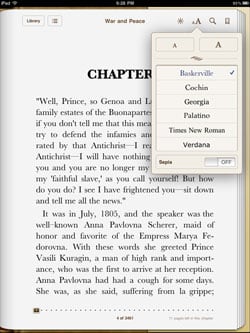
The iBooks program offers a range of controls for font and text size
Buying Books
{{section_header}}{{section.name}}{{/section_header}}
Buying new titles via the Amazon eBookstore is simple enough, but somewhat complicated by the lack of a keyboard. Once you've set up your account complete with billing information with Amazon, simply select or search for the title you would like to download, and click "buy." Once you've done this, the title will begin downloading in the background, and it will be added to your available library once it is finished.
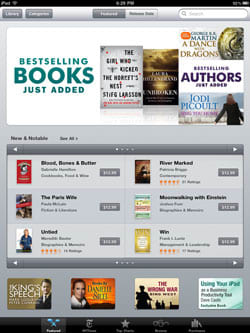
Books can be purchased on the iPad through the iTunes store
Once you buy a title on the Amazon eBook store, you can re-download it onto another device, or clear it out of your memory should you elect to do so; you've got that book available to you as long as you have a WiFi connection. Using Amazon's WhisperSync feature, when you open that title on another device, it will even appear at the same page as you left it.
eBook Formats
{{section_header}}{{section.name}}{{/section_header}}
Because the {{product.name}} is married to the Amazon eBook store, it doesn't support many competitive formats, but it does well enough by supporting AZW, PDF, TXT, and MOBI files natively as well. If you own eBooks in a format that is not compatible, you can always locate and download conversion software, like Calibre to preserve your library.
{{product.manufacturer_specs['eBook Formats Image']}}
Newspapers & Magazines
{{section_header}}{{section.name}}{{/section_header}}
The periodical section of the Amazon eBook store has upwards of 180 titles, many of which can be subscribed to. If you elect to buy a subscription, the newest issues will be downloaded automatically as they become available, even if the {{product.name}} is turned off (but with the wireless left on).
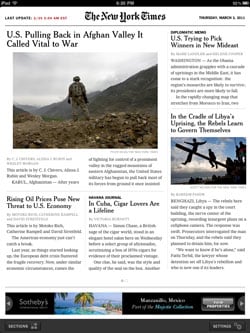
The New York Times is available on the iPad through their own app
eBook Battery Life
{{section_header}}{{section.name}}{{/section_header}}
{{product.manufacturer_specs['eBook Battery Life Image']}}
{{section_header}}{{section.name}}{{/section_header}}
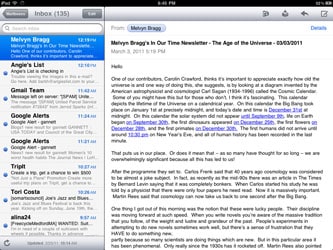
The iPad email app is basic, but adequate for most users
Web Browsing
{{section_header}}{{section.name}}{{/section_header}}
Included in the "Experimental" menu is a rudimentary browser that is simply not a good option for browsing the web. Most of the fault lies with the fact that eInk screens have yet to develop a good refresh rate for this sort of thing, but it really seems out of place when there's no functional keyboard or mouse. You're probably better off leaving this alone, unless you love being as frustrated as possible with your mobile browser.
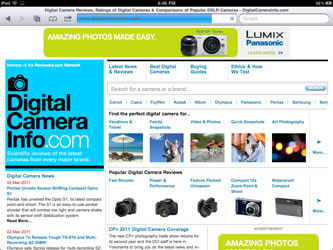
The iPad boasts a fully featured Safari web browser
Device & Specs
{{section_header}}{{section.name}}{{/section_header}}
Both devices are very similar, but with the one glaring change: the lack of a keyboard on the {{product.name}}. While for many this means that their eReader will be more portable, it does have the unintended consequence of making searching for new titles extremely annoying.
While the {{product.name}} does have that one flaw, the reduced weight leavens fatigue over long reading sessions, and the reduced size also makes the unit much easier to carry around in a bag. Amazon elected to keep the eInk screen, and we agree that this was a good idea; both iterations of the Kindle have an outstanding picture for eReaders.
Screen
{{section_header}}{{section.name}}{{/section_header}}
The eInk Pearl screens of both the {{product.name}} and the Kindle Keyboard Wireless have a high DPI and work well in all lighting conditions, with the exception of low light. You really can't go wrong with either here, they're virtually identical.
Battery
{{section_header}}{{section.name}}{{/section_header}}
Both the Kindle Keyboard and the {{product.name}} have similarly-sized batteries and similar power requirements, and each have an impressive battery life: they will both last you over 24 hours of constant eBook reading with plenty of battery to spare.
eReader
{{section_header}}{{section.name}}{{/section_header}}
Because they're on the same platform, you will have roughly the same experience from a software standpoint, but as a pure eReader, the {{product.name}} is probably the better bet, as its lightened weight and thinner profile make it easier to carry around and read for hours on end.
Internet
{{section_header}}{{section.name}}{{/section_header}}
Both have similarly poor internet features from a browser standpoint, but the Amazon eBook store and the cloud storage is a very nice feature to have. Both eReaders are great in this regard.
Device & Specs
{{section_header}}{{section.name}}{{/section_header}}
While both devices are no-frills eReaders without crazy or uesless features, the Nook Touch adds the element of a functioning IR grid to simulate a touch screen on the eReader. This makes the fielding by Barnes & Noble far easier to interface with as a user, as you can actually type on the virtual keyboard, and not pick out each individual character with a d-pad like the {{product.name}}. Outside of that, though, the {{product.name}} is far lighter, has a smaller profile, and it's cloud storage allows it to sync with your library without ever connecting to your computer.
Screen
{{section_header}}{{section.name}}{{/section_header}}
Both devices are built around a small eInk Pearl screen, though the Nook Touch's screen has an IR grid to simulate a working touchscreen. You will have a virtually identical experience with both in reading eBooks, although the Nook's screen allows you to swipe to turn pages.
Battery
{{section_header}}{{section.name}}{{/section_header}}
The {{product.name}} should has a similarly long battery life (over 24 hours straight) reading eBooks with the wireless turned off. The Nook Touch impressed with breaking the 10 day mark.
eReader
{{section_header}}{{section.name}}{{/section_header}}
As a standalone eReader, the Nook Touch has the better interface, while the {{product.name}} has the better hardware. It's very hard to trump a touch-based interface with an eReader. Still, you are more likely to be able to read longer with the {{product.name}}, as it has a smaller profile, and less weight, leading to lower fatigue in the long run.
Internet
{{section_header}}{{section.name}}{{/section_header}}
Neither eReader has access to the apps that you'd see on an iPad, so it seems a bit silly to compare the two in terms of internet features. That being said, the {{product.name}} having cloud storage is actually quite nice, as you can store your library on Amazon's cloud storage for free.
Device & Specs
{{section_header}}{{section.name}}{{/section_header}}
When it comes to eReaders, the devices of the Kobo eReader Wireless and the {{product.name}} are about as close as they get. While the {{product.name}} has a bigger screen, the Kobo and the {{product.model}} are operated by simplistic physical controls, and your main means of interfacing with each device is the d-pad. That being said, the {{product.name}} has an improved processor and dedicated page-turn buttons, while the Kobo does not.
Screen
{{section_header}}{{section.name}}{{/section_header}}
Both screens are eInk Pearl screens, with a high DPI and a look resembling real printed paper. Neither reflect much light and neither have an IR grid for touch interfacing. Both work great in most lighting conditions.
Battery
{{section_header}}{{section.name}}{{/section_header}}
Both the {{product.name}} and the Kobo will last you over 24 hours straight of reading eBooks, so you shouldn't find yourself in a bad spot in the middle of a trip with no power, be it a short car ride or intercontinental flight.
eReader
{{section_header}}{{section.name}}{{/section_header}}
As eReaders go, both are very similar, outside the clunky controls of the Kobo and the lighter weight of the {{product.name}}. You will also be able to take the {{product.name}} more places than the Kobo due to its slimmer profile.
Internet
{{section_header}}{{section.name}}{{/section_header}}
Conclusion
Amazon has thrown down the gauntlet to other tablet and eReader manufacturers by offering a new generation of competitive devices at a drastically reduced price, and it's up to competitors to catch up. That said, the new Kindle isn't remarkably different than previous iterations and Amazon is still keeping the previous generation on the market, albeit rechristened as the "Kindle Keyboard The new Kindle is simply sans keyboard. Unlike the Kindle Touch and Kindle Keyboard, there is no 3G version of the basic Kindle; it's WiFi-only.
Amazon's proprietary system for managing content remains one of the best on the market: convenient and simple. You can access your library using the free cloud storage. Though a decent browser eludes the Kindle (in fact, it's downright crippled), most users are probably more worried about reading books, something which the {{product.name}} does very well.
The eInk Pearl screen used by the {{product.name}} is the industry standard for eReaders, and offers a clear, crisp picture that is easily legible. It looks more like a printed page than an electronically-reproduced image. Because this screen draws so little power, the battery life is similarly impressive and should last you through long weekend and well beyond. (We read War & Peace on the Kindle Keyboard without a single recharge.) Our only serious complaint is inputting text with the crummy little d-pad is a ridiculous process. If you plan on browsing for purchases in the Amazon store, do it in a real internet browser and push the purchases to your Kindle.
If you're looking for an ultra-portable eReader that doesn't get too fancy with features, the {{product.name}} is a very pragmatic option. Consumers will find the new lineup of the Kindle family to be very affordable, with performance that won't let you down either.
Meet the tester
A seasoned writer and professional photographer, Chris reviews cameras, headphones, smartphones, laptops, and lenses. Educated in Political Science and Linguistics, Chris can often be found building a robot army, snowboarding, or getting ink.
Checking our work.
Our team is here to help you buy the best stuff and love what you own. Our writers, editors, and experts obsess over the products we cover to make sure you're confident and satisfied. Have a different opinion about something we recommend? Email us and we'll compare notes.
Shoot us an email